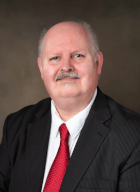100,000th lithium-Ion Forklift for Jungheinrich
EUROPE REPORT

German OEM Jungheinrich has accomplished a remarkable goal, delivering its 100,000th lithium-Ion Forklift truck. An ETV 216i Reach truck was the star of this milestone, with 15 other identical models delivered to the Amazon warehouse in Leipzig.
In 2011, Jungheinrich was the world’s first industrial truck manufacturer to launch a series-produced truck with a lithium-ion battery. Since then, lithium-ion technology has become the fastest-growing battery technology for industrial trucks.
PSR Analysis: According to Jungheinrich, compared to a diesel truck of the same performance class, an electric truck with a lithium-ion battery emits less than half the CO2 during its entire lifetime, including its manufacture. By using electricity from renewable energy sources, the CO₂ emissions of the vehicles in operation can be reduced by up to 90%. It is not a surprise to see the increase of battery electric trucks in the European production mix.






